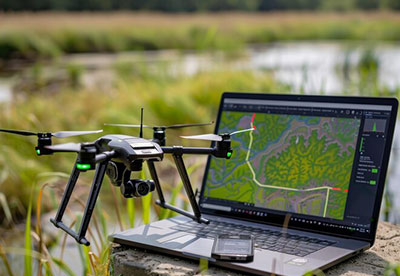Artificial Intelligence is evolving and with generative AI models, the way we use AI has changed drastically over the past year. They gave us a wide range of automation and scaling abilities to ensure growth and ease of operations. Although AI and ML have been a great choice to improve operations and customer interactions, how do you ensure you stand out from the competition and establish yourself as the best in the industry?
Well. It’s not easy but with the right strategies and consistent efforts, it won’t be difficult. Thus, to ensure you have the right strategies we have compiled a list of ongoing and predictive trends beyond 2023. Implementing them in compliance with your Industry norms can help you achieve target goals efficiently. Let’s Unravel the trends in the AI world to create the best strategies that could help you achieve your target goals quicker
1 AI is No Longer the Future- Harness its Potential Now!
Companies are still working on researching AI and planning to implement it for automation, but more than 67% of the companies are actively using AI. According to research, companies using AI to improve automation and customer support have improved conversions by 128%.
AI instantly became a revenue driver for organizations and companies must leverage strategies to implement AI for automation and customer support.
2 Ensure Deploying AI Using Architecture that is Easy to Scale
Organizations must prepare for a wide range of data and infrastructure environments during the transition from pilots and proofs of concept to in-production and scaled AI initiatives, including variations to address diverse use cases.
They can invest in data architectures supporting venues from the core to the edge, even if many projects begin in the cloud. Latency and data sovereignty can be factors driving this investment. An enterprise-wide AI implementation is seamless when making the right investments during the AI project’s inception. By fostering an enterprise-wide “prepare to scale” mindset, make the proper investments to achieve this.
3 Focus on Sustainability Over Short-Term Costs
Cost and sustainability should never be a competing trade-off during selection criteria. Doing so neglects the long-term alignment between the two objectives. Focus on sustainable business models and use cases that can benefit from AI, including improving the efficiency of IT architecture and operations. It is possible for an organization to reduce its energy use and environmental impact by investing in modernizing its data architecture.
4 Integrate Them to Improve User Experience
With AI-driven enhancements, every interaction becomes more intuitive and valuable. Improving the user experience using AI offers visitors a personalized, seamless, and engaging journey through the digital realm.
Enable AI for dynamic content recommendations based on user behavior, preferences, and historical data. As visitors navigate, they’re greeted with tailored suggestions, enhancing engagement and conversion rates. It makes the user experience more intuitive, responsive, and personalized, ultimately enhancing user satisfaction, conversions, and retention.
5 Automate User Journey on the Website or Application
AI systems analyze user behavior and engagement patterns to intelligently suggest relevant products, services, or content, enhancing their journey and increasing conversion rates. A transformative approach to user journey automation is using AI to streamline and personalize the entire experience.
Automation through AI optimizes the user journey by addressing pain points in real time. AI fine-tunes page load times, ensuring a swift and seamless experience, regardless of connection speeds. Automating the user journey through AI is like having a personal guide throughout the app or website. It simplifies interactions, customizes content, and optimizes the overall experience, creating satisfied and engaged users.
6 Encourage the Usage of Generative AI to Brainstorm Ideas Quicker
By harnessing the capabilities of generative AI, businesses can enable their teams to brainstorm with unprecedented speed and depth. This technology, powered by advanced algorithms and neural networks, can analyze vast datasets and produce novel ideas, designs, and concepts within seconds.
Generative AI platforms, such as GPT-3, have become invaluable tools for brainstorming sessions. They can provide teams with creative suggestions, alternative solutions, and drafts for marketing, design, or development projects. Artificial intelligence saves companies a great deal of time, allowing them to focus on refining and implementing ideas instead of trying to devise them from scratch.
7 Implement Voice Inputs and Outputs to Improve Accessibility
Improving accessibility through the implementation of voice input and output technologies is a transformative endeavor that opens up a world of benefits for individuals with diverse needs. Voice input and output are a lifeline to make technology more accessible. Voice commands enable them to navigate devices, access information, and communicate independently.
Voice input and output enhance multitasking and hands-free operation, making technology more convenient for everyone. Having access to such information enables them to participate in online communities, access information, and access information. It enhances efficiency for all users, creating a more user-friendly and accessible digital experience.
Conclusion
Implementing AI can help you create a unique digital experience by automating processes and improving interactions. Even though they are continuously evolving keeping up with the trends can help you evolve and leverage industry-ready tech to optimize costs and time leading to maximizing profits.
At Canopus Infosystems, we understand the evolving market trends and leverage automation to improve user experience. We offer next-gen IT services including Business Intelligence, Drone Software, etc, and implement Automation to improve profits.
4 mins read


















